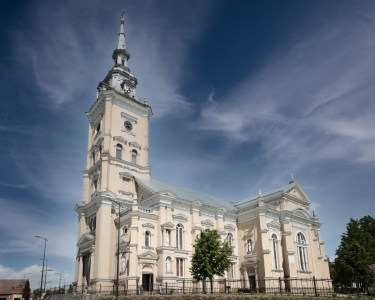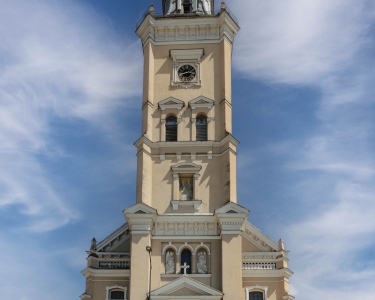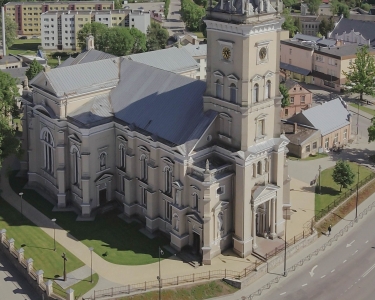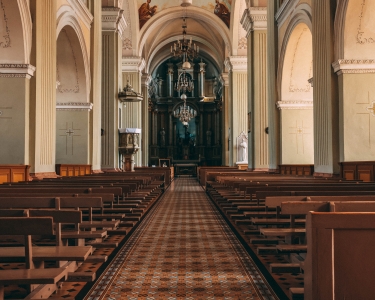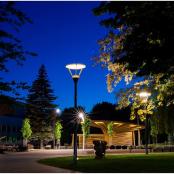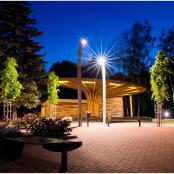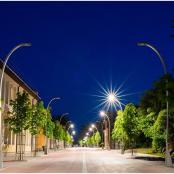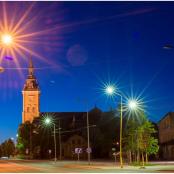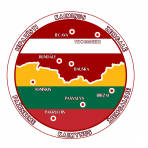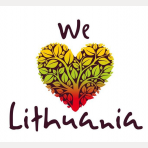Assumption of the Blessed Virgin Mary Church in Joniškis
The first ever wooden church in Joniškis was built and legitimised in 1536 by Bishop Jonas of Vilnius, one of the Dukes of Lithuania, and is associated with the beginning of the Christian town. In 1605 a brick church was built here, thanks to the care of the parson of Joniškis Benediktas Sviechovskis, the parishioners and patrons. The present single-towered, triple-naved, aisle-like, cross-shaped Church of Joniškis (designed by architect Karl Eduard Strandmann, architect-engineer Piotras Serbinovičius) was built in 1901 with the help of a local priest Liudvikas Šiaučiūnas, as well as with the work of the parishioners. The exterior of the Church is decorated with an expressive 59.83 metre tall bell tower with an elaborate helmet-like pinnacle, facade niches with sculptures of saints (most of them by the sculptor Vincentas Jakševičius), an abundance of arched and stained-glass windows, and a plethora of artistic oak doors. The church tower has four 18th century bells. The interior of the Church is also impressive with its 7 altars. Particularly memorable is the Great Altar decorated with sculptures, which stands out among Lithuanian churches of this style with its size, style and artistic level. The Church's floors are covered with mosaic tiles, and the choir is equipped with a grand organ by 19th century Liepaja craftsman Karl Herman.
The Church contains sacred art treasures from various periods, including the reliquaries of St Martinian and his painting with its mountings and votive offerings dating back to the 17th century, and the painting by Adomas Varnas, a painter from Joniškis, named St Guardian Angel.
Inside the Church stands a commemorative bust of the church builder L. Šiaučiūnas (1931) and a marble plaque commemorating the founder of the parish and the builder of the first church, Bishop Jonas of the Lithuanian Dukes (2011).
Since 2017, the Church tower has been equipped with a mechanical, luminous, chiming clock. The Church is recognised as a cultural heritage of national importance from the architectural, artistic, sacral and archaeological points of view (No. 2482).
